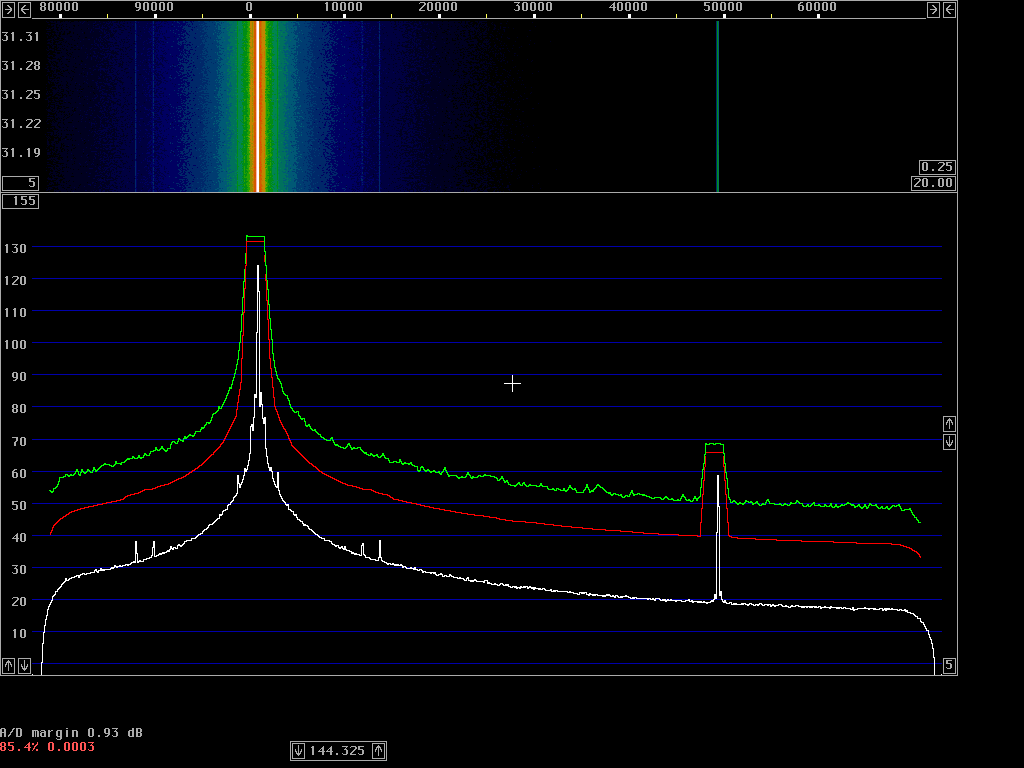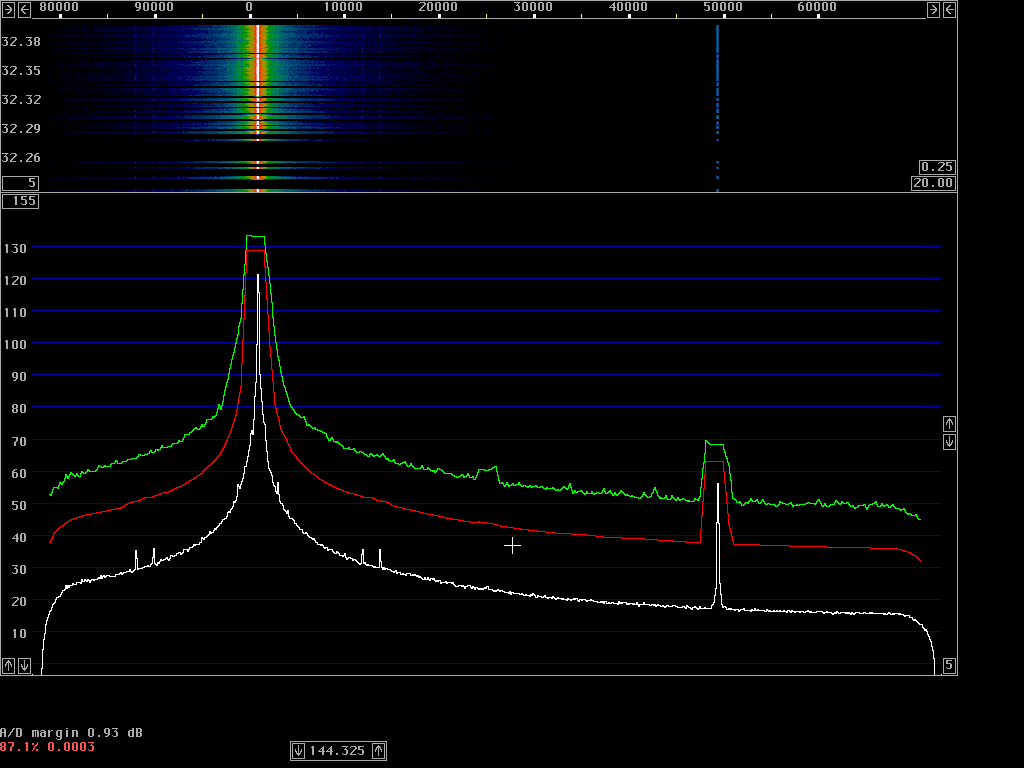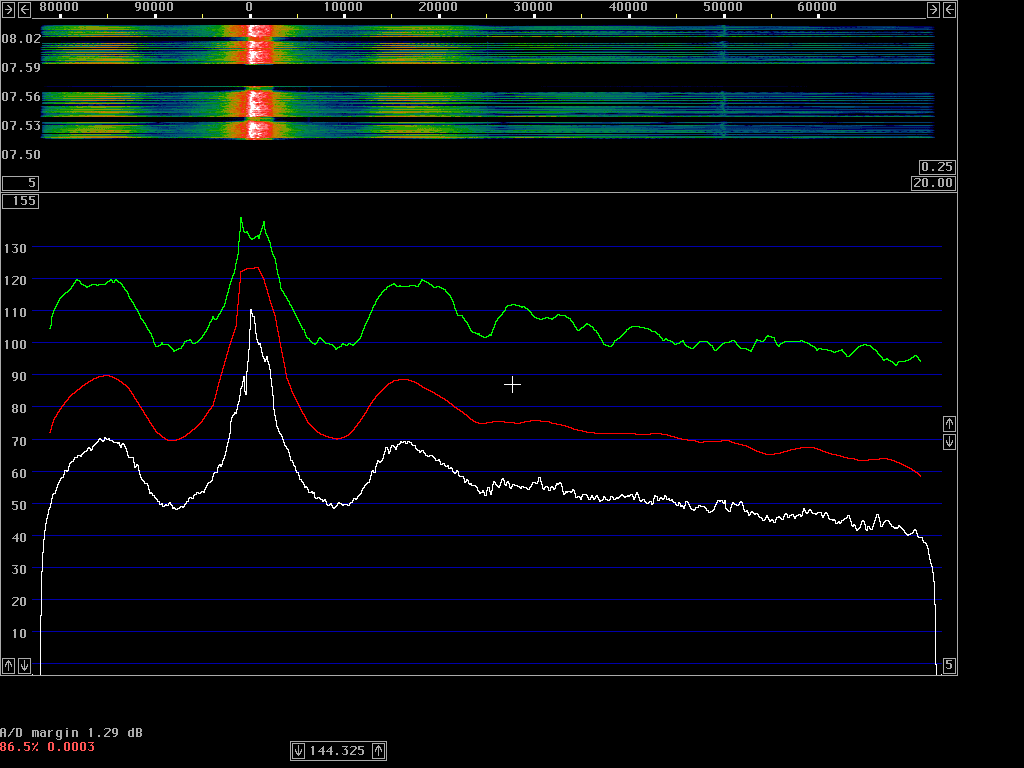
Fig. 1 Continous carrier of the FT817
Setup to measure transmitter spectral purityThese measurements were made with Linrad running on a PentiumIII 600MHz computer with a modified Delta44 soundcard. The 144 MHz signals were converted to audio by use of the WSE converters RX144, RX70, RX10700 and RX2500.Linrad was run in Tx test mode The measurement system has much better dynamic range than required for these measurements so no corrections have to be made for the noise contribution from the measurement system.
Spectral purity of a continuous carrier.The screen dump for continuous carrier is shown in figure 1.
|

The following numbers are extracted from the red curve which is average power in 2.4 kHz:
------------------------------------------------------
Freq Coordinates Level Sideband
separation X Y 2.4 kHz noise
(kHz) (pixels) (pixels) (dB) (dBc/Hz)
0 258 242 0.0 -
5 306 460 67.9 101.9
10 353 487 76.3 110.3
20 447 511 83.8 117.8
50 732 538 92.2 126.2
------------------------------------------------------
Spectrum of FT-817 emitting continuous carrier.


The spectrum shown here is typical for the FT-817. Several other transceiver models show similar very strong spurious emissions due to ALC instabilities.